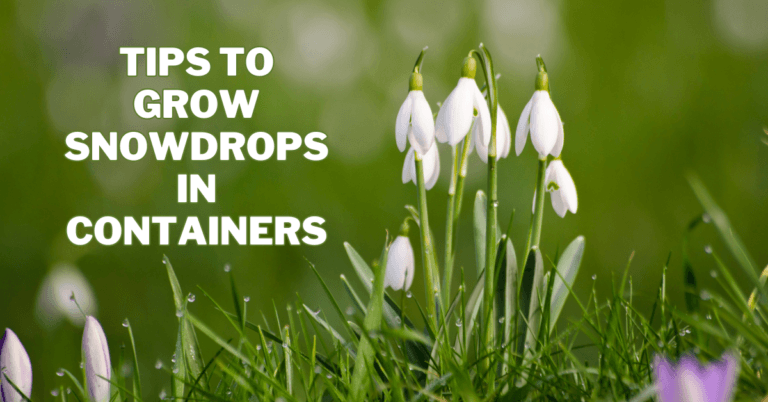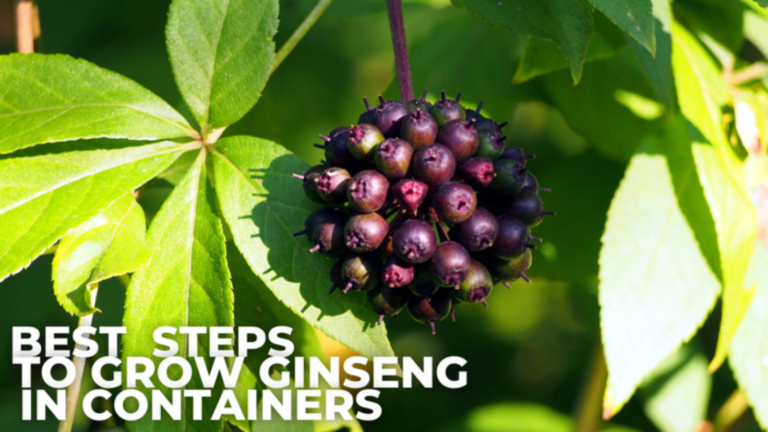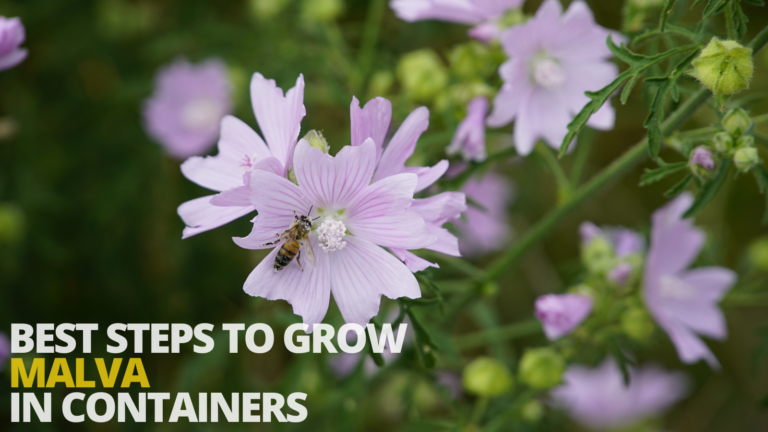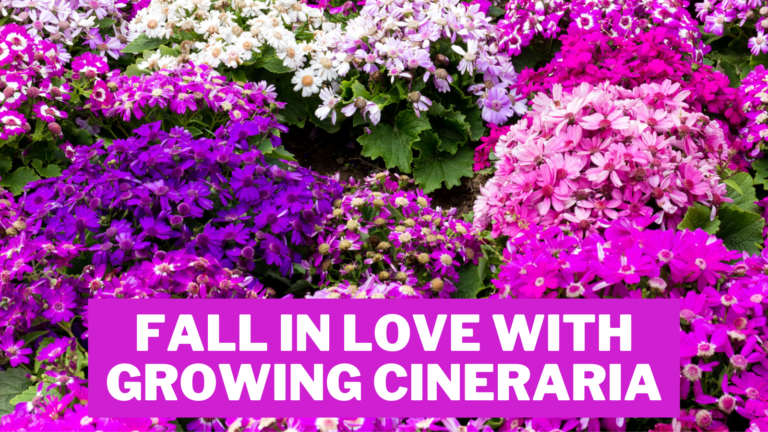9 Tips To Growing Fig Trees In Containers
9 Tips To Growing Fig Trees In Containers
Northern gardeners, especially those in zones 6 and colder, will find it difficult to grow figs. Strong-willed gardeners invented various strategies to withstand winter's cold, with multiple degrees of success.
Some suggest pushing the tree over in the fall and burying it beneath a mass of earth, leaves, and mulch. Others recommend wrapping the tree in a large burlap blanket loaded with straw. Both procedures are time-consuming, and none improves the appearance of your winter garden.
Figs are the ideal tree fruit for container gardening. The trees' foliage is lovely and tropical, and they don't take up a lot of room; even fully grown fig trees are satisfied to thrive in a huge pot. Fig trees are low-maintenance: they don't require a lot of fertilizer, they grow quickly and respond well to pruning to maintain their shape, and they are pest-free.
They're also self-pollinating, which means you can grow only one and get fruit. Unlike many other regularly produced fruit trees, Figs often bear fruit in their second or third growing season, whereas many other fruit trees take years to bear fruit.
Fig trees are widely accessible from internet sellers and nurseries, and your local gardening center may stock fig tree species that are appropriate for your climate.
The Brown Turkey fig is commonly available in our location, yet even this robust fig requires protection from freezing in the winter. Alternatively, if you're lucky, a fellow gardener might be willing to donate a cutting from their favorite tree.
History
The majority of wild fig trees require pollination. On the other hand, natural genetic modifications have resulted in a few wild trees that do not require pollination.
These mutant fig trees can only be reproduced by taking cuttings and intentionally replanting them. As a result, evidence of fig farming has been discovered, placing this fruit among the earliest crops mankind planted and collected.
Because it was grown in regions where biblical events occurred, the fig has many Biblical connections. When Adam and Eve wore fig leaves for the first time, it took on symbolic significance. Over fifty times in the Bible, figs are referenced.
Ficus Carica is thought to have originated in Asia Minor, which is now part of Turkey. It grew and became widely farmed throughout the Mediterranean region from there. Figs were so prized in Greek and Roman civilizations that their love of the fruit motivated Xerxes' invasion of Greece and the Roman devastation of Carthage.
In his “History of Animals,” Aristotle, the famous Greek philosopher, briefly explains the caprification process, which is how the Smyrna-type figs are pollinated. Under a fig tree, Romulus and Remus are shown breastfeeding the mother wolf.
The Greeks and Romans assisted in the spread of fig cultivation to other areas under their control. Figs were plentiful throughout Africa, Portugal, Spain, and France at various times and had even made their way to the Isle of Man. Since the beginning of the fig, Turkey has been a center of fig cultivation and production.
It wasn't until Franciscan Missionaries from Spain established Missions in California that figs made their way to North America. Fresno soon became the epicentre of California fig cultivation and production, and it is now the only place in the United States where figs are cultivated commercially.
Fig Nutrition
One small (40-gram) fresh fig contains
- Calories: 30
- Carbs: 8 grams
- Fibre: 1 gram
- Copper: 3% of the Daily Value (DV)
- Magnesium: 2% of the DV
- Riboflavin: 2% of the DV
- Vitamin K: 2% of the DV
- Thiamine: 2% of the DV
- Vitamin B6: 3% of the DV
- Potassium: 2% of the DV

Figs' Top 7 Health Advantages
Figs are an excellent source of sugar, soluble fiber, and minerals. Iron is a mineral that is essential for all of us, especially growing women. Fresh and dried figs are both good sources of iron. Figs are high in potassium, calcium, magnesium, copper, and antioxidants such as vitamin A and vitamin L, all of which can help with general health and wellness.
1. Promotes Gastrointestinal Health
Because of their high fiber content, figs are frequently recommended to nourish and tone the intestines. They also act as a natural laxative. They also include prebiotic fiber, which feeds gut flora and promotes a healthy gut environment, which helps digestive health.
2. Weight Loss
Fibre-rich figs can be a great mid-morning snack, especially for those on a diet. Dried Anjeer is a delicious and nutritious snack. 2 or 3 dried figs will keep you fuller for longer, allowing you to keep long gaps between meals.
3. Develop Antioxidant
Polyphenols, plant components that protect us from harm, are abundant in figs, especially ripe ones. These substances have protective antioxidant characteristics, which means they help prevent oxygen from interacting with other chemicals and causing damage to cells and tissues. They are, therefore, essential for oxidation management.
4. Could Help In Lowering Blood Pressure
Fast-food consumption is rising, which may contribute to high blood pressure issues. Potassium levels in the body are frequently out of equilibrium due to high blood pressure. Because figs are a good source of potassium, they can help raise potassium levels naturally, which may help control blood pressure.
5. Could Be Beneficial To Heart Health
Its high fiber and potassium content aid in removing excess fat from the body and reducing heart pressure. This can significantly improve your heart's health.
In addition to these two benefits, figs are high in antioxidants, which help reduce free radicals while lowering triglycerides and bad cholesterol. As a result, your heart becomes stronger and lives longer.
6. Help To Improve Bone Health
Figs are high in calcium, magnesium, and phosphorus, all beneficial to bone health. According to some studies, figs are particularly high in calcium, containing 3.2 times more than other fruits.
Potassium can help to prevent calcium output in the urine, which is induced by a high-salt diet. This, in turn, aids in retaining calcium in the bones, potentially lowering the incidence of osteoporosis.
7. Promote Healthy Skin
It may help you have better skin. Figs may be useful to the skin, especially in persons who suffer from allergic dermatitis or dry, itchy skin caused by allergies. In one study, a cream made from dried fig fruit extract used twice daily for two weeks was more effective than hydrocortisone cream at treating dermatitis symptoms in 45 children with dermatitis.
Types Of Figs
North America has over 1000 types of figs, suitable for both long and short seasons. Plant nurseries, on the other hand, have a limited assortment of only a few types.
You'll need to find a hobby fig grower who will trade you some fig scion wood for multiplication if you wish to cultivate some lesser-known kinds. If you want to try rooting some fig trees, look for more information at the end of this article. Before growing Fig Tree in Containers, you should find the best variety for pot and familiarize yourself with your climate.
1. Peter’s Honey Fig
Peter's Honey fig has deep amber flesh and is lemon yellow. It needs a little more warmth, so plant it in a sheltered location away from chilly winds. This double cropper can be grown in zones 7 through 11.
2. Hardy Chicago
It’s another great type To Grow Fig Trees in Containers. Hardy The skin of Chicago is brown-purple, and the flesh is strawberry-coloured. It has a pleasant, sweet flavour. It can withstand temperatures as low as zone 4 if protected from the elements during the winter. It's a heritage cultivar that Sicilians from Mount Etna brought to Chicago. It's been grown in the Chicago area by fig aficionados ever since.
3. Negronne Figs
Negronne figs get their name from the town in the Bordeaux area of France where they were first discovered. The scarlet flesh of the purple-black fruits has a strong honey flavour. This is one of the better varieties. It can withstand temperatures ranging from 7 to 11 degrees Fahrenheit.
4. Desert King
Desert King was created in the 1920s in California. The huge figs have a deep strawberry-coloured flesh and a green skin flecked with white dots. Desert King is a fast-growing plant. The primary harvest ripens in the summer, while a minor crop will ripen later in the fall.
5. Italian Honey Or Lattarulla Fig
The Lattarulla Fig, or Italian Honey Fig, is a large green fig with delicious, light amber flesh. It will produce a crop in the middle of the summer, followed by a smaller crop in the fall.
6. Stella Fig
The Stella Fig is a huge, green-yellow fig with rich crimson sweet flesh brought to North America by a sailor named for his wife. Stella is a double cropper as well.
7. Black Spanish
Black Spanish is readily available from plant nurseries, with dark purple skin and strawberry red meat. It's a good choice for hotter climates.
8. Vern’s Brown Turkey
Vern's Brown Turkey is a more reliable version of the older (and less reliable) brown turkey fig. It has a brown exterior and pale amber flesh and bears fruit reliably in the summer and fall.
Tips To Grow Fig Trees In Containers
Step 1: Make Figs From Cuttings
Blanche, Brown Turkey, or Celeste are fig varieties that grow and yield fruit in containers. To grow in your containers, use a healthy cutting from your local nursery.
Seedlings or young fig trees with well-established root systems can also be purchased.
Blanche figs, also known as Italian honey figs, produce medium to large fruits, while Brown Turkey figs are small to medium.
Step 2: Container Selection
You can use any material for your container (wood, clay, ceramic, recycled materials, etc.) Just ensure there are enough drainage holes to let any excess water out. Avoid using large decorative pots that may be difficult to transport once filled with soil, water, and a fig tree.
Don't squander any space! Begin with a tiny container and gradually increase the size until the tree roots fill the existing container. Start with a 5- or 7-gallon container and work up to a 10-gallon container once the tree's roots have filled the previous container size.
Your fig tree may eventually grow into a container with a diameter of 2.5 feet, such as a half whiskey barrel, but these are heavy and difficult to transport, so make sure you can handle the container size you choose.
Step 3: Pot With Potting Mix
To promote your fig's root system, use a soil-based potting mix with a pH of 5.5 to 6.5. Fill your container with potting mixture until it's about 1 inch (2.5 cm) away from the rim, allowing you to water it.
Go to your local nursery or garden supply store and get some good potting mix. Pests such as nematodes are less likely to harm your figs when you use potting mix.
You can test your soil's pH level if you're unsure. Add some dolomitic limestone to raise it if it's too low. Add more aluminum sulphate to it if it's too high.
Step 4: Sunlight Requirements
Figs, like college students on spring break, enjoy the sun. They want seven to eight hours of direct sunlight during the growing season.
Don't underestimate your tree's potential and desire to spread out when choosing a location. It could feel a little crowded if it's too close to a wall or fence. These trees don't have a particular preference for soil, although they prefer a well-drained loam with plenty of organic matter.
Step 5: Repotted In A New Container
Repotting is another important part of growing fig trees in containers. Container-grown figs should be repotted at the start of the season, just as the new leaves develop. If you reside in a hot climate, use lighter-coloured pots rather than black plastic pots when planting figs in containers. If you reside in a colder climate, black pots can provide more warmth for your container figs. Before you add your planting material, fill the pot with broken pottery or rocks.
Step 6: Pruning
Pruning your fig tree is necessary to get the most out of it. Fig trees, unlike most other fruit trees, don't need to be pruned regularly, but you can prune them to fit your space. Fig trees can grow 10 to 15 feet tall or more, depending on the kind.
Many fig-tree farmers believe that keeping them between 6 and 8 feet tall, especially in containers, is the most manageable height. If let grows naturally, some fig trees appear bushy. If your fig tree has a “bushy” shape and you'd prefer just one main trunk, you can prune out the lower growth until you have one main trunk.
Step 7: Add Organic Fertilizer
You can use organic farm manure as a fertilizer for your new plants. If you can't get it, dried manure pallet organic fertilizer from your local gardening store is a fine substitute.
Step 8: Watering
A lot of water is required. Fill the hole with a huge bucket of water and let it settle. Young fig trees require regular irrigation, depending on the climate.
Water young fig trees twice a week during the summer for the first year and once a week only for the second year if you live in the northern Mediterranean region. After that time, the tree should be well established and able to obtain sufficient moisture from its deep roots in the earth.
Step 9: Supporting
Adding a supporting pole about 30 cm from the tree is a good idea. Take a length of elastic rope and tie it to the tree to keep it from being damaged by heavy winds. The rope should have a solid but flexible feel to it. Plant ties can be purchased at your local gardening store if you are unsure which rope to use.
Staking a tree is optional; whether or not you do so depends on whether or not you predict severe winds in the area where your fig tree is placed.
Diseases & Pests Of Fig Trees
To grow fig trees in containers, you should be aware of these diseases to protect your fig trees.
1. Leaf Blight
Another fungus that damages leaves is Pellicularia kolerga (leaf blight), which forms yellow blotches that resemble water-soaked. Water-soaked regions spread and dry out as the disease progresses, leaving a papery surface behind.
A web-like mat of fungal organisms clings to the underside of damaged leaves, causing thin holes to tear out or the entire leaf to brown and die. The only way to prevent infection is to remove infected leaves as soon as they appear and keep contaminated material off the ground.
2. Fig Rust
In late summer or early fall, this fungus causes leaves to become yellow-brown and drop. Many rust-coloured dots can be seen on the leaves underside when examined. Although fig rust infestations are rarely lethal, they can weaken your plant over time. While neem oil can kill an early rust infection, clearing falling debris frequently keeps fig rust at bay.
3. Pink Blight
The most colourful of the major fig problems, pink blight damages the interior of overgrown figs and appears as a pink to white velvety coating on sickly or dead branches.
If left untreated, the fungus can spread from dead tissues to healthy ones, entire devastating trees. Cut away and kill sick tissues as soon as possible, and open up the inside of your fig by thinning out up to a third of the smaller growth to make room for air circulation.
4. Fruit Souring
Figs sour on the tree due to various yeasts that are thought to be introduced by vinegar flies or dry fruit beetles. As figs ripen, they may leak or create bubbles, emitting a fermentation-like odour.
Insect treatment may help, but your fruit will be at risk each season unless you plant fig kinds like Celeste, Texas Everbearing, or Alma, which have closed ostioles.
5. Root-Knot Nematodes
These common, unseen roundworms produce damage that is difficult to diagnose since they sometimes look like other root illnesses. Root-knot nematode-infected trees display a steady decline, have chronically poor health, and aren't as energetic when generating leaves and fruits.
Digging a few roots reveals swelling galls that eventually block the root system, resulting in the fig's demise. Because they protect themselves with the plant's tissues, root-knot nematodes are difficult or impossible to kill.
6. Fig Mosaic Virus
The virus that causes fig mosaic is thought to be transmitted by the eriophyid mite Aceria fici and spread by cuttings. Yellow dots emerge on the leaves of infected trees, albeit they may not be equally distributed or on every leaf.
These patches form rust-coloured bands as the season progresses. Fruits can be spotted, stunted, or fall off too soon. Once your plant has become symptomatic, there is no therapy for fig mosaic; it should be killed to avoid future spread.
Conclusion
In conclusion, growing fig trees in containers is a great option for those who don't have a lot of space or who want to keep their fig trees portable. You can successfully grow fig trees in containers by following the tips outlined in this article, such as choosing the right container size, providing adequate drainage, and using quality soil and fertilizer.
Remember to pay attention to watering and sunlight needs, prune your tree regularly, and protect it from pests and disease. With some care and attention, you can enjoy a bountiful harvest of delicious figs from your own container-grown tree!
I trust you enjoyed this article on the 9 Tips To Growing Fig Trees In Containers. Please stay tuned for more blog posts to come shortly. Take care!
JeannetteZ
>>>Please click here to read my all-inclusive article about Container Gardening<<<
Are you interested in homegrown herbs and medicine? Please click here to find out more about it!
Your Opinion Is Important To Me
Thoughts? Ideas? Questions? I would love to hear from you. Please leave me your questions, experience, and remarks about this article on the 9 Tips To Growing Fig Trees In Containers in the comments section below. You can also reach me by email at Jeannette@Close-To-Nature.org.
Disclosure
This post may contain affiliate links. I earn from qualifying purchases as an Amazon Associate and other affiliate programs. Please read my full affiliate disclosure.
You might also enjoy these blog posts:
10 Steps To Growing Blueberries In Containers
Follow 10 Steps To Growing Banana Trees In Containers
9 Steps To Growing Swiss Chard In Containers
Simple Guide To Growing Watermelon In Containers
Growing Strawberries In Hanging Containers

















